Riding the Rails: The Evolution and Influence of Rail Transportation on Global Logistics
Rail transportation, frequently hailed as the foundation of logistics, has been instrumental in reshaping the global transportation scene. Rail transport has gone through considerable changes and milestones from its humble beginnings in the early 19th century to its current status as an essential element of international trade.
Find out the primary benefits of rail transportation, contrast it with other means of transportation, and look at its historical growth as well as the personalities that have influenced it.
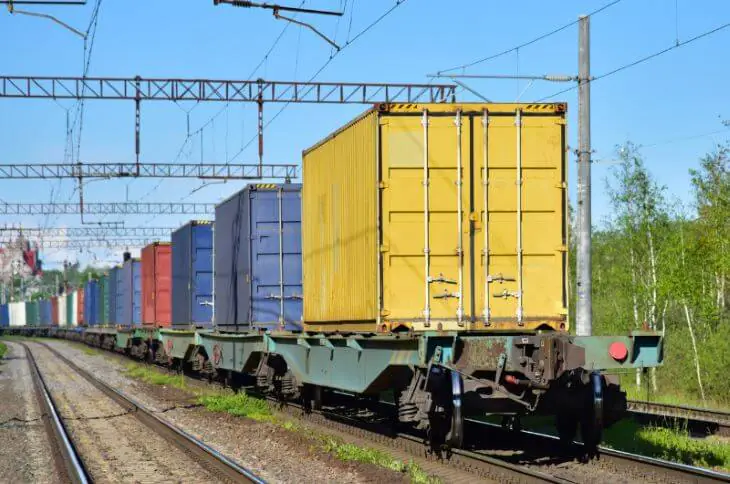
Source: www.canva.com
What is the history of rail transportation?
The development of rail transportation has been a wonderful adventure that has drastically changed the way people and items move around the world. Rail transportation has been characterized by a series of revolutionary turning points that have affected civilizations, economies, and industries all over the world. These historical turning points not only reflect technological advancements but also the indomitable human spirit to cross barriers, unite people, and facilitate the movement of people and commerce.
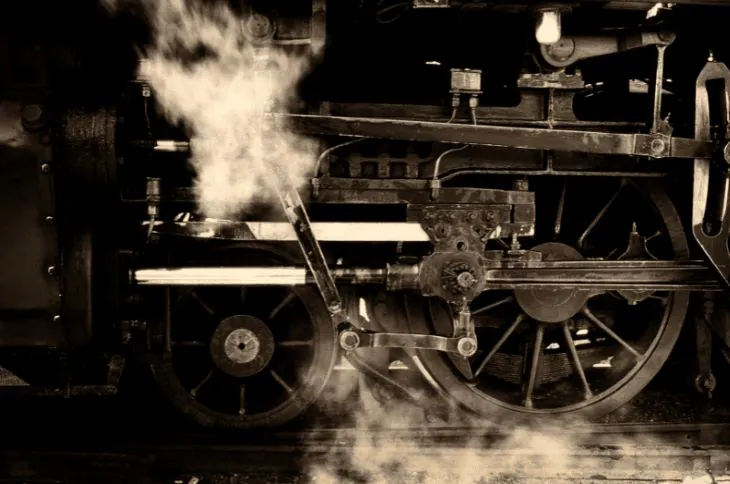
Source: www.canva.com
1. The Steam Locomotive Era (Early 19th Century)
The steam locomotive’s creation is credited with giving birth to rail transportation. The first operational steam locomotive to move a load across the ground was created by Richard Trevithick in 1804. This creation opened the door for George Stephenson’s famous “Rocket” in 1829, which was the first steam locomotive to carry people on a public railway between cities and also signaled the start of the railway era.
Self-taught mechanical genius George Stephenson, known as the “Father of Railways,” revolutionized the transportation industry with his discoveries and pioneering passion. Stephenson’s rise from a coal miner to a renowned engineer, despite his humble upbringing, demonstrated his commitment to engineering excellence. Beyond locomotive design, Stephenson’s influence spanned continents. He influenced the building of railways in many countries while supporting the standardization of rail gauge, a legacy that continues to this day as a pillar of contemporary rail transportation. Underscoring his long reputation as a pioneer in the field of railways, George Stephenson’s immeasurable contributions continue to influence how people and products are transported.

Source: www.canva.com
2. Transcontinental Railroads (19th Century)
An economic revolution was sparked by the building of transcontinental railroads in the United States, such as the First Transcontinental Railroad, which drastically cut travel times and freight transportation costs. Since the construction of the First Transcontinental Railroad, a railway network with tracks amounting to a length of 225,308 kilometers (~140,000 miles) has been built in the US (FRA).
The development of numerous nations’ significant rail networks was happening concurrently with railroad growth in Europe. The United Kingdom, Germany, and France were some of the European countries that had notable developments in transcontinental railroads during this period. Greater regional communication and trade were made possible by this European rail boom, which helped the continent’s industrialization and economic expansion. An era of uncommon mobility and prosperity was ushered in as a result of the joint efforts on both sides of the Atlantic.
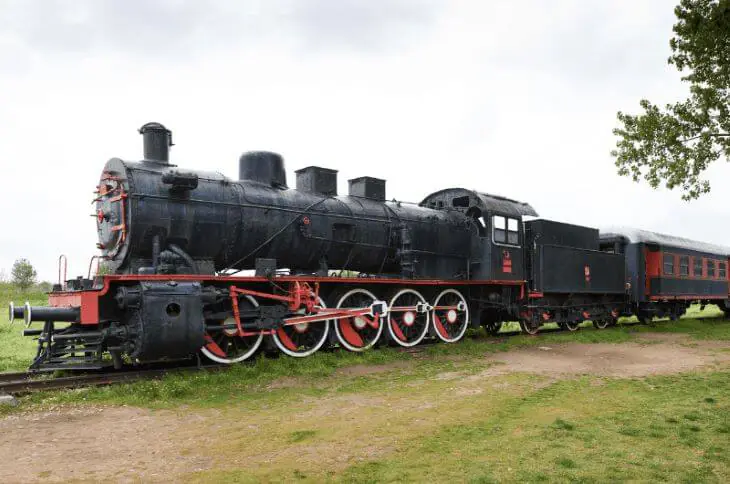
Source: www.canva.com
3. The Golden Age of Rail (Late 19th and Early 20th Century)
The late 19th to early 20th century saw the height of the world’s rail transportation during the “Golden Age of Rail.” The development of famous luxury trains like the Orient Express and the completion of enormous undertakings like the Trans-Siberian Railway occurred during this period. The Orient Express, which connected Paris and Istanbul together while also promoting cross-cultural contact, epitomized the glamor of international travel with its luxurious carriages and wonderful service. The Trans-Siberian Railway, which spans almost 9,300 kilometers (~5,779 miles) through Russia, opened up Siberia and allowed for the extraordinary flow of people, products, as well as ideas.
With streamlined locomotives like the Flying Scotsman, this era not only provided luxury passenger experiences but also fueled technological advancements. Railways opened up long-distance travel to the general public, altering economies and communities. The legacy of the Golden Age of Rail lives on through historic railways, vintage trains, and the enduring attractiveness of luxurious rail travel, even though it eventually gave way to more modern modes of transportation.
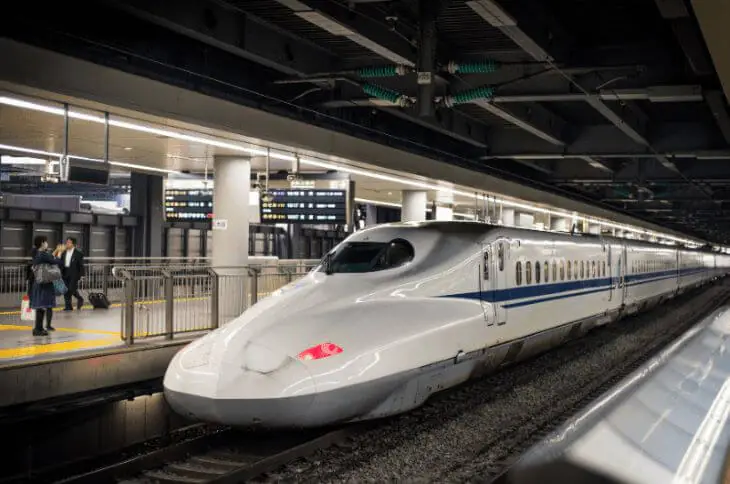
Source: www.canva.com
4. Electrification and High-Speed Rail (20th Century)
The introduction of high-speed trains, such as the Japanese Shinkansen, and the electrification of rail lines have raised the standard for the effectiveness, safety, and speed of rail transportation. These developments not only transformed passenger travel but also increased the efficiency and sustainability of freight transport, thus strengthening the position of rail in contemporary logistics.
High-speed rail networks have continued to develop and grow internationally, with nations like France, China, and Germany setting the bar in building their high-speed networks. This shows the continuous significance of rail in the twenty-first century. A great example of this development is the aforementioned Japanese Shinkansen. The first Shinkansen, which began operation in 1964, had a top speed of roughly 210 km/h (130 mph). Modern Shinkansen trains, such as the N700 series, can travel up to 320 km/h (199 mph), though. That’s already quite a significant speed, but still nothing compared to the world’s fastest train – the L0 Series Maglev from Japan, which has a maximum speed of 602 km/h (374mph). At this speed, the journey from Brussels to Paris would take 0.5 hours or 43 minutes to get from Los Angeles, CA to Las Vegas, NV.
Pros and Cons of Rail Transport
Like every other means of transportation, rail travel has benefits and drawbacks of its own. Let’s examine these in more depth:
Advantages
- Cost-Effective for Bulk Freight: When it comes to transporting heavy loads over vast distances, rail travel is very economical. Trains are more cost-effective for transportation since they can move heavy cargo in a single trip. In terms of numbers, there is a study comparing the price of shipment by rail and by truck from Texas to Ohio. The study found that rail transportation costs $70 per ton, while truck transport costs $214 per ton. This data shows that rail transportation was approximately three times cheaper than truck transport (ESI Logistics 2020).
- Efficiency: Trains are known for their low energy consumption per ton-mile and high fuel efficiency. They have become a more cost-effective and environmentally responsible solution as a result.
- Safety: In general, rail travel is safer than driving. Lower accident rates are a result of strict safety regulations and the isolation of rail lines from roads. In 2021 in the EU, there were 1,389 significant railway accidents, compared to 4,333 lorry and heavy goods vehicles accidents (Eurostat 2023, European Commission 2021).
- Reduced Traffic Congestion: Truck traffic is reduced by rail transportation, which also lowers the likelihood of accidents and traffic congestion.
- Reliability: Because trains are less prone to weather-related delays than other forms of transportation, they maintain more stable schedules, are more dependable, and are punctual.
- Environmental Benefits: Compared to diesel trucks, electric trains emit fewer greenhouse gasses, which results in cleaner air and a smaller carbon impact. In general, trains produce 3 times less greenhouse gas emissions than trucks. To compare electric and diesel trains, electric trains emit 30% less carbon. On average, electric trains are significantly more environmentally friendly and can emit up to 85% fewer greenhouse gases per ton-mile compared to diesel trucks (Stanford University, 2022).
- Longevity: Compared to road vehicles, rail infrastructure and locomotives have longer useful lives, which lowers long-term maintenance and replacement expenses. Railcars are designed to last 50 years and locomotives are meant to last 30.
Disadvantages
- Limited Flexibility: Due to its reliance on set routes and schedules, rail transportation is less adaptable than road transportation. It might not be appropriate to deliver items to inaccessible or distant places
- High Initial Infrastructure Costs: It can be expensive to build and maintain train infrastructure, such as rails and terminals. This might make it difficult for new rail projects to get started.
- Limited Accessibility: Some businesses and clients may not be near rail stations and terminals, necessitating additional transportation to get there.
- Slow Speed for Some Cargo: Despite the existence of high-speed rail, train transport for time-sensitive freight can be slower than other modes. When speed is important, this could be a disadvantage. For example, fresh produce, seafood, or certain pharmaceuticals may require faster shipping to maintain their quality and meet consumer demands.
- Limited Passenger Services: Rail passenger services could be limited or less practical in some areas when compared to other options such as driving or flying.
- Maintenance Challenges: Regular maintenance and modifications are needed for rail tracks and rolling stock, which can cause delays and increase expenditures.
- Competition with Other Modes: The market share of rail transportation may be impacted by competition from other modes (air transportation, road transportation, and others), in some sectors and geographical areas.
Tip: If you are a fan of pros and cons lists, then you should read this article: Pros and Cons of road transport.
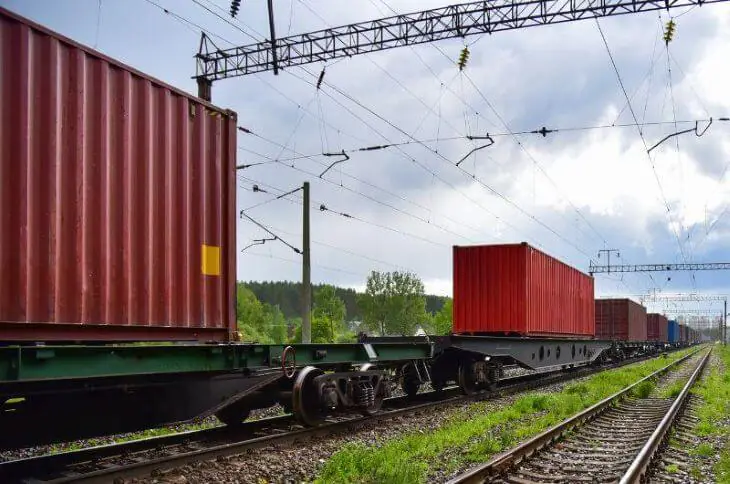
Source: www.canva.com
Comparison with Other Modes of Transport
Let’s examine how rail transportation compares to other types of transport.
Rail vs. Road Transportation
Both rail and road transportation have specific benefits, and they are frequently combined to form effective supply chains.
With the help of existing road networks, road transportation can practically reach any destination. It is perfect for last-mile delivery and time-sensitive cargo because it is excellent for door-to-door delivery.
However, rail dominates when it comes to long-distance travel. Trains are more effective for moving bulky items like coal, grain, or raw materials since they can move far heavier loads than trucks. Additionally, rail transportation uses a lot less fuel per ton-mile. Trucks only get 145 ton-miles per gallon of fuel, compared to trains’ 477 ton-miles per gallon (Sam Forman, Stanford University, 2022). This results in cost savings and lower carbon emissions. While reducing transportation costs and environmental impact is crucial, this efficiency becomes especially useful. What do the numbers say? In 2021, trucks moved 77 percent of all products in the European Union, freight trains only 17 percent, and the remaining 6 percent consisted of inland waterways. (Eurostat 2023).
Rail vs. Air Transportation
Rail transport, particularly for land-based distribution, can be more cost-effective than air travel for the delivery of perishable items like fresh seafood. Take Alaskan salmon as an example. Salmon needs to be moved rapidly from Alaskan waters to a variety of markets across the country. Air travel is quicker, but it can also be expensive. On the other hand, rail transportation strikes a balance between efficiency and speed. Large amounts of salmon may be easily transported on refrigerated railcars to distribution hubs, guaranteeing that customers receive fresh seafood while reducing transportation costs.
Rail vs. Sea Transportation
Consider importing consumer electronics from foreign producers, such as laptops or cell phones. Due to its affordability for long-distance trips, sea transport is the preferred method for transferring these goods across seas. However, in the following stage of distribution, rail transportation becomes crucial.
Trains move electronic goods-filled containers from coastal ports to inland distribution centers. When transferring goods from ports to their final locations across the nation, this multimodal system combines the financial benefits of marine transport with the effectiveness of rail, ensuring prompt delivery to retailers and customers.
The historical development of rail transportation, punctuated by important turning points and the commitment of visionary figures like George Stephenson, has cemented its position as a pillar of contemporary logistics.
The cost-effectiveness, dependability, and environmental sustainability of its many benefits continue to have an impact on international trade in commodities and people. Integrated transportation networks cannot function without rail transport, even though they face obstacles and competition from other modes. This is due to its superior capabilities. Rail transportation continues to be a significant factor in the dynamic world of logistics, influencing how we communicate, transact, and move within it. Evidence of this is that there are more than 1.3 million route kilometers (over 800,000 miles) in the global railway network (Erick Burgueño Salas, Statista 2023).
Rail transportation is a critical component of the logistics industry and plays a significant role in the movement of goods, particularly for long-distance and bulk cargo. It is expected to continue playing an important role in the future of logistics. Whether you are shipping your products by ship, train, or truck, we will assist you with their loading. Try EasyCargo loading software to enhance your loading efficiency, as well as save money, space, and time.




